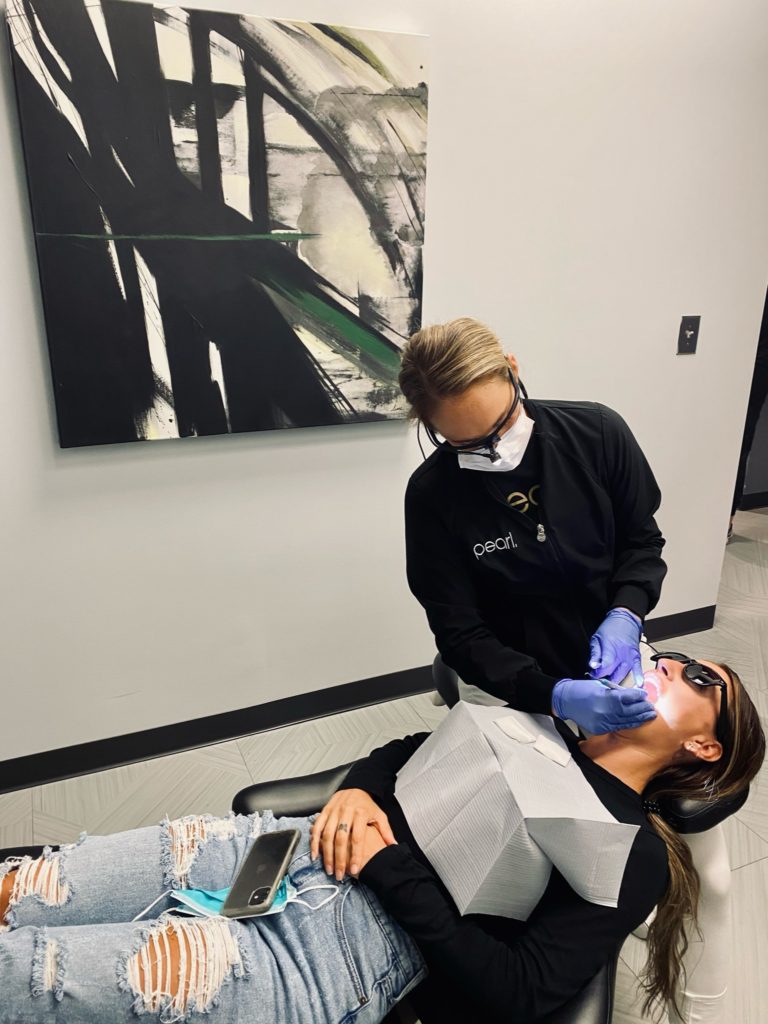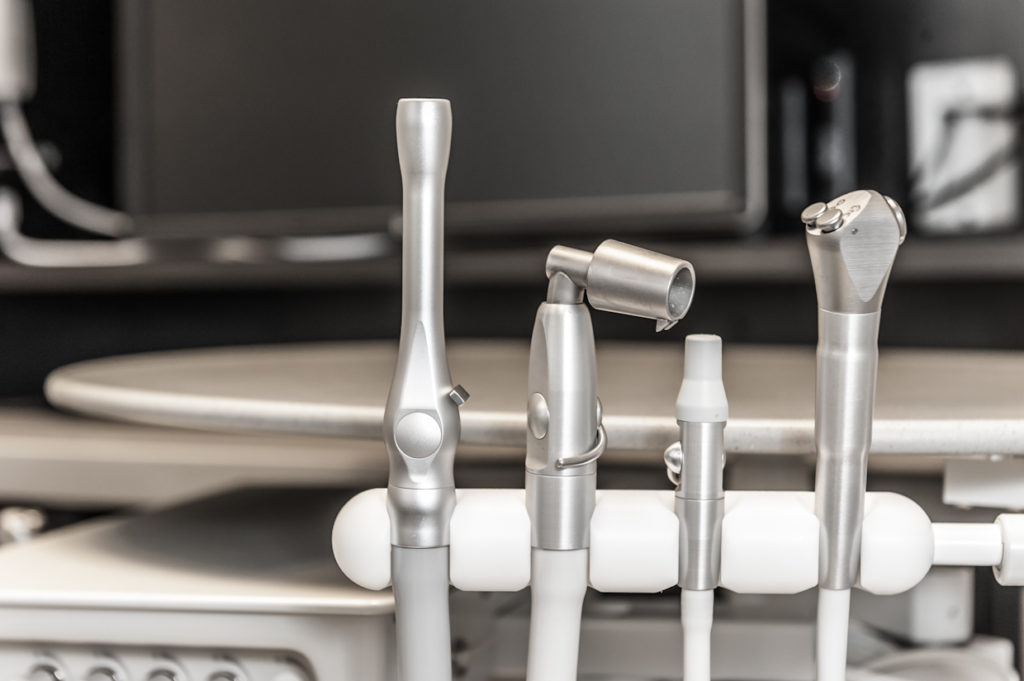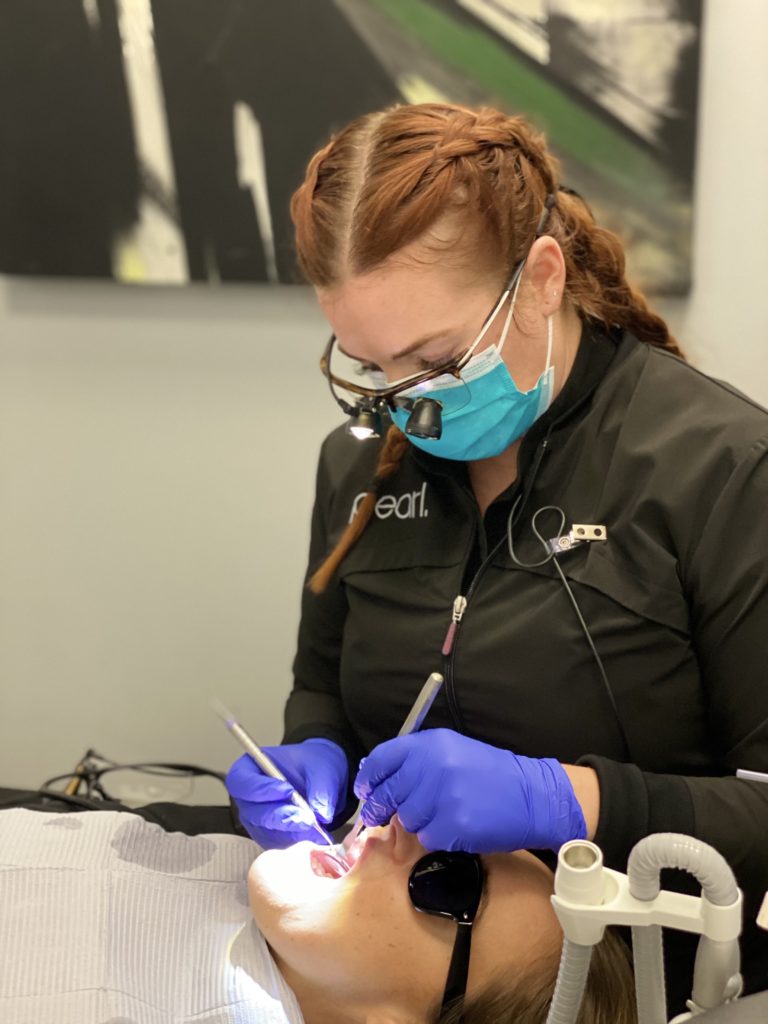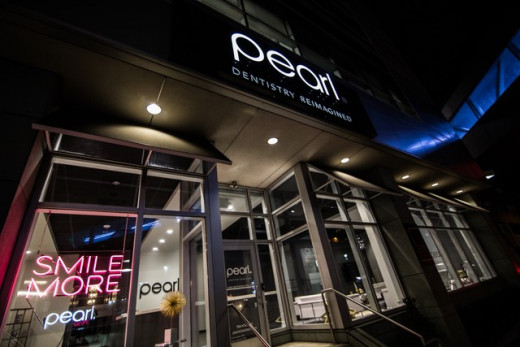Cavities, toothaches, and discolored teeth are all easily detectable; the associated pain or discomfort signals that you should give our office a visit. Gum issues, on the other hand, are often neglected and harder to detect on your own. The American Academy of Periodontology found that roughly three out of four Americans suffer from a stage of gum disease, but only 3% of those affected actually seek treatment for their problem. This is due to the lack of awareness of severity and symptoms. That’s why we take the time to teach our patient’s the signs of gum problems and how to prevent them!
Common Misconceptions
“Bad hygiene is the only way to develop gum disease.”
Although inattention to dental care can be a factor, this is not the only reason for gum disease development. Factors such as genetics, stress, poor diet, and lifestyle choices such as tobacco usage can all lead to gum troubles.
“Gum disease is painful.”
Sometimes described as a “silent disease,” gum disease is not always noticed because of its sneaky symptoms. It can often only be detected at appointments, so maintaining a regular oral hygiene schedule is key. That means visiting our office at least twice a year. Symptoms to be aware of in-between visits include tender or bleeding gums, chronic bad breath, receding gums, painful chewing, and loose teeth. If you start to notice anything close to these symptoms, schedule an appointment with us right away.

“You can’t have gum disease if you don’t have cavities.”
Since gum disease is often inconspicuous, it is believed that only cavities are the cause. However, this is not the case. While tooth decay and weakened gums can go hand-in-hand (read about it here) one can also develop without the other. That’s even more of a reason to be mindful of the symptoms previously listed!

“All forms of gum disease can be cured.”
Gum disease can present itself in various stages, and only one of those can be reversed. Gingivitis is the most mild case, and can be fixed with regular teeth cleanings and routine oral
hygiene steps. However, any progression after gingivitis can only be managed, not cured. It is important to pay attention and try to correct any problems before they progress to irreversible ailments.
“Gum disease only affects your oral health.”
A common result of gum disease is tooth loss, and that’s not the only consequence. Various studies have shown that it also can lead to heart disease, cancer, stroke, and diabetes. Paying attention to the state of your gums and getting routine dental cleanings can help you prevent these concerns and maintain overall health.

“You can’t wear Invisalign retainers if you suffer from gum disease.”
Unlike traditional braces, Invisalign is especially suited for coexisting with gum disease treatment. Because conventional braces can only be removed by the dentist, the patient is unable to access certain areas of the teeth. This results in trapped food, which can turn into plaque. Let it go on any longer, and it can evolve into tartar, which increases the risk of gum disease. Additionally, treating your smile with Invisalign will make receiving a general check-up easier because straight teeth allow your hygienist to clean more efficiently.
Gum health is just as important as routine teeth care, and should be taken seriously. One preventative solution is to invest in a quality electric toothbrush like our personal favorites, the BURST Sonic and Philips Sonicare brushes, both available in-office. Additionally, if you think you may be developing disease or decay, the best thing to do is book an appointment with us. We provide quality dental care with luxury amenities to make medical appointments easy, helpful, and even enjoyable!
To schedule an appointment in one of our Charlotte offices, click here.
To participate in a virtual consultation, click here.








